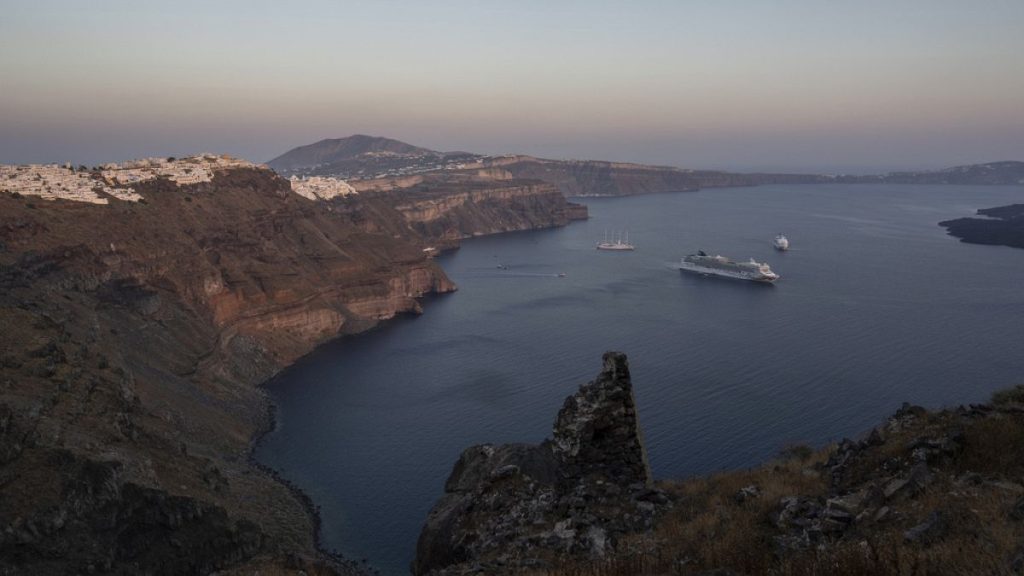The idyllic Greek island of Santorini, renowned for its picturesque whitewashed villages perched atop dramatic volcanic cliffs, found itself at the center of a seismic flurry, triggering a wave of precautionary measures and raising concerns among residents and visitors alike. Over 200 undersea earthquakes, many registering magnitudes exceeding 4.5, rattled the region surrounding Santorini and several neighboring Aegean Sea islands, popular summer destinations for millions of tourists. While experts reassured the public that the seismic activity was tectonic, not volcanic, in origin, the sheer frequency and increasing intensity of the tremors sparked anxiety and prompted authorities to implement preventative measures.
The earthquake swarm, which persisted for several days, prompted the closure of schools on Santorini, Amorgos, Anafi, and Ios. Residents described an unsettling experience, with tremors occurring every 10 to 20 minutes, creating a palpable sense of unease. Authorities, mindful of the potential for a more significant seismic event, issued advisories urging residents and visitors to avoid large indoor gatherings and steer clear of areas susceptible to rock slides. Hotels were instructed to drain swimming pools to mitigate the risk of destabilization in the event of a strong quake. This precautionary measure highlighted the seriousness with which authorities were approaching the situation, prioritizing the safety of both residents and the influx of tourists.
The Greek Ministry of Civil Protection, in collaboration with scientific experts, closely monitored the evolving seismic activity. Emergency meetings were convened to assess the situation and coordinate preventative measures. The constant updates and advisories underscored the government’s commitment to transparency and public safety. Civil Protection Minister Vasilis Kikilias emphasized the precautionary nature of the measures, urging citizens to adhere strictly to safety recommendations while reassuring them that authorities were maintaining vigilant oversight. This proactive approach aimed to minimize potential risks and ensure a coordinated response in case of a larger earthquake.
The UK’s Foreign, Commonwealth & Development Office (FCDO), echoing the Greek Ministry of Civil Protection’s warnings, updated its travel advice for Santorini and Amorgos. The advisory cautioned against visiting specific ports in the Fira area due to landslide risks, recommending safe travel routes and emphasizing the importance of heeding local authorities’ advice. The FCDO stressed the need for immediate evacuation from coastal areas in the event of a strong tremor, underscoring the potential danger posed by tsunamis following significant seismic activity in coastal regions.
Santorini’s unique geological history, shaped by a massive volcanic eruption over 3,500 years ago, contributes to the island’s breathtaking landscape but also its vulnerability to seismic activity. The crescent-shaped island, a magnet for over three million visitors annually, faced the challenge of balancing tourism with the imperative of public safety. Local authorities in Fira, the island’s main town, designated gathering points for residents in preparation for a potential evacuation. Mayor Nikos Zorzos, while emphasizing the preventative nature of these measures, acknowledged the need for preparedness. He also cautioned against sensationalized reporting, urging residents to remain calm while acknowledging the underlying concerns.
Renowned Greek seismologist Gerasimos Papadopoulos highlighted the evolving nature of the seismic sequence, noting the increasing number and magnitude of tremors, as well as the northeastward shift of epicenters. While characterizing the quakes as tectonic rather than volcanic, he acknowledged an escalated risk level. Papadopoulos’ assessment, emphasizing that “all scenarios remain open,” captured the inherent uncertainty surrounding earthquake prediction. The cluster of seismic activity between Santorini, Ios, Amorgos, and Anafi, visible on live seismic maps, served as a stark reminder of the dynamic forces at play beneath the Aegean Sea. This ongoing seismic activity, while not directly linked to Santorini’s volcano, underscored the region’s susceptibility to earthquakes and the critical importance of preparedness and vigilance.


